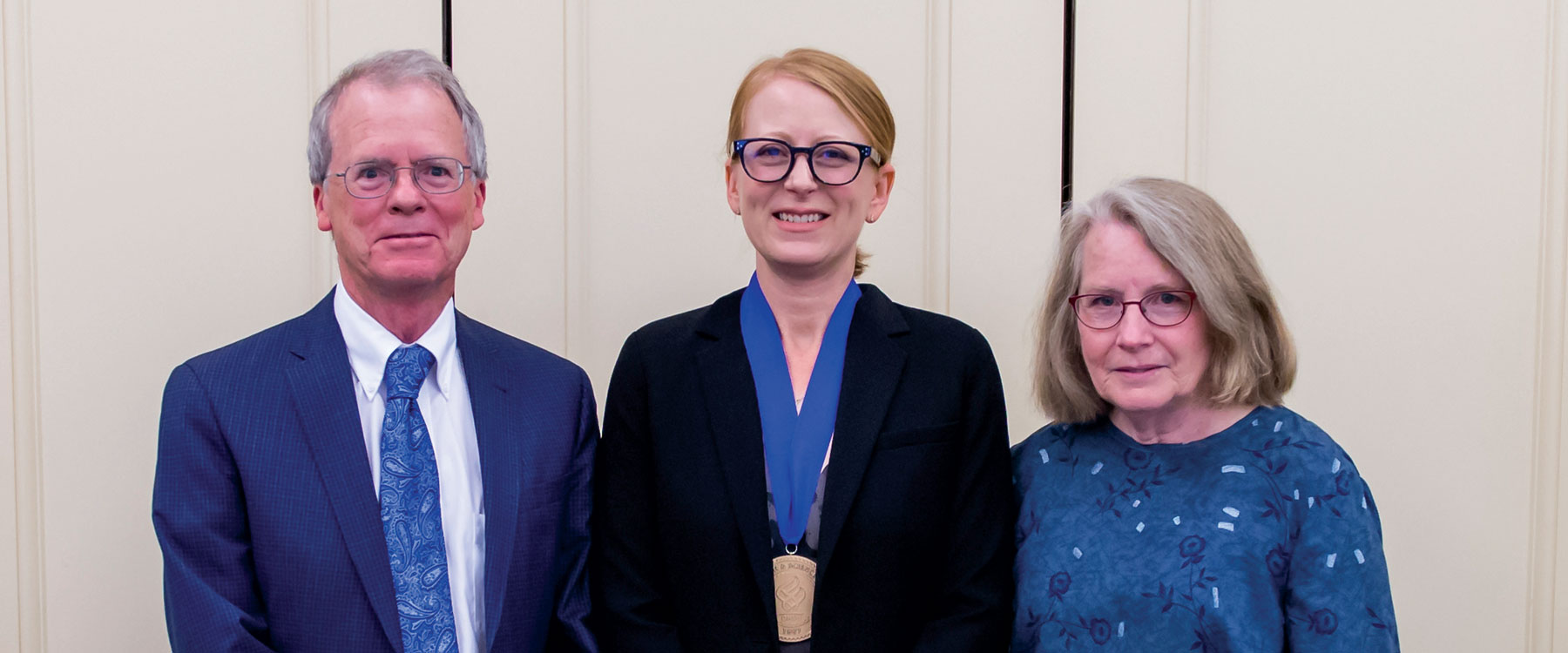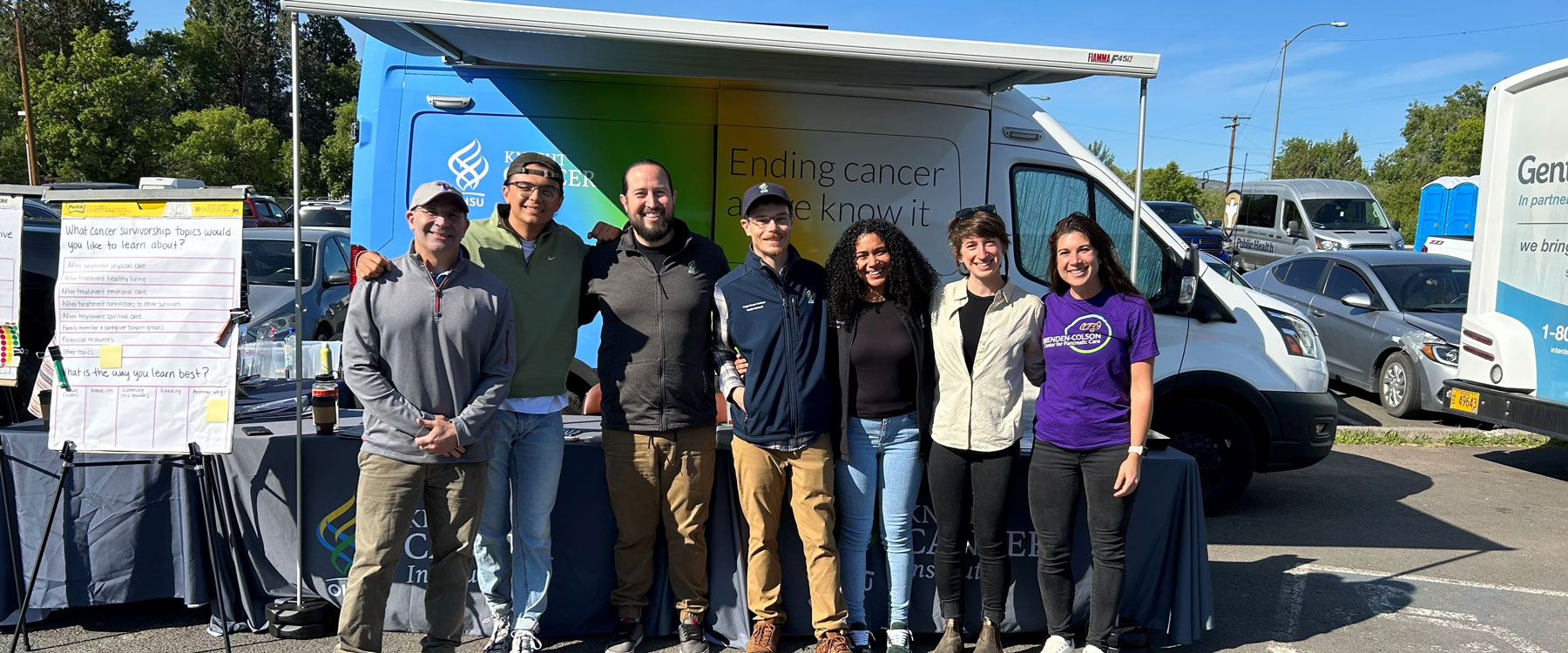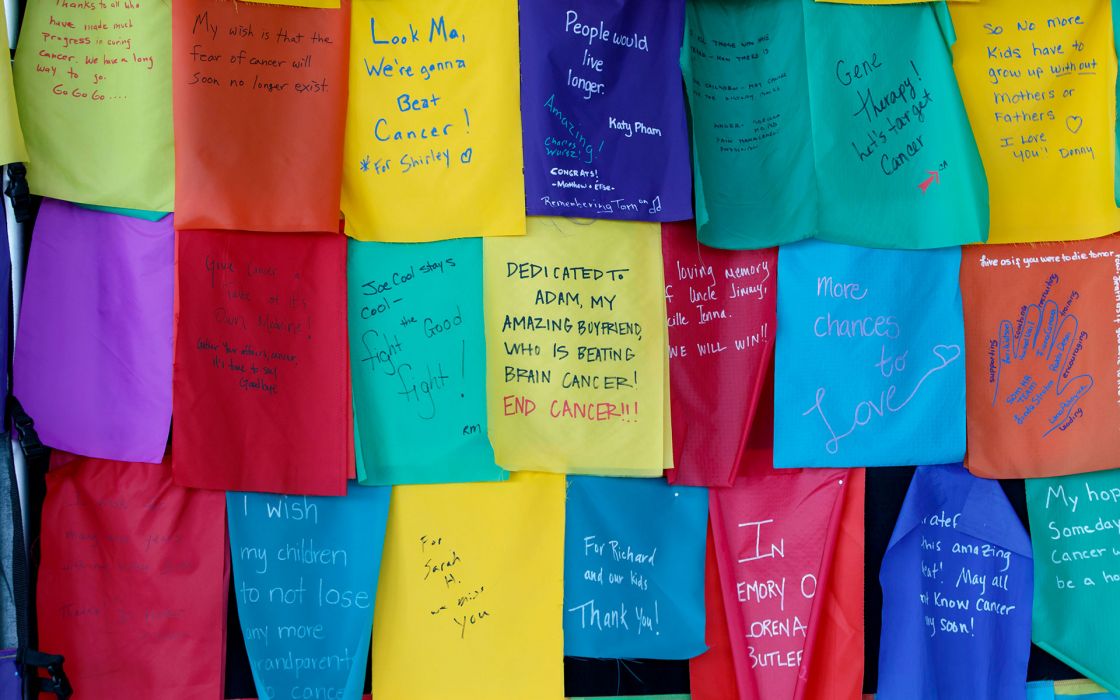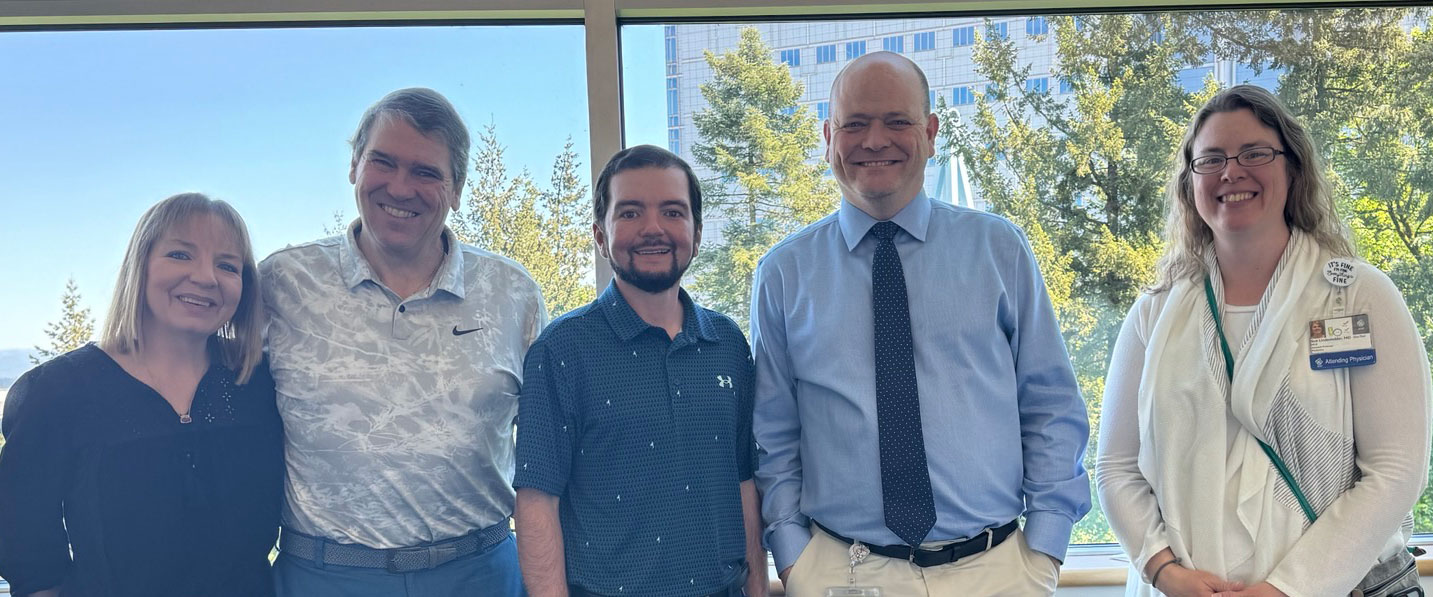Daniel Gibbs, M.D., Ph.D., has a unique tattoo. After a diagnosis of early-onset Alzheimer’s disease, he entered a clinical trial for an experimental treatment. An adverse reaction to the drug caused blood to leak from the vessels in his brain, sending him to the ICU for two days. He recovered from the incident, but his brain was left with permanent areas of hemosiderin pigment — tiny black spots that appear on special MRI scan sequences. This tattoo inspired the title of Gibbs’s book, A Tattoo on My Brain: A Neurologist’s Personal Battle Against Alzheimer’s Disease (Cambridge University Press, 2021).
Long before his diagnosis, Gibbs had dedicated his career to the study of Alzheimer’s and care for patients living with the disease. By openly sharing his unique experiences and by endowing a professorship in Alzheimer’s research at OHSU, he hopes to leave an indelible impression on tomorrow’s patients, researchers and caregivers.
In 1986, Gibbs came to Portland for a neurology residency at OHSU. Afterwards, he and his family decided to remain in Portland, where he spent more than two decades in private practice at a community hospital before rejoining OHSU for the final three years of his career. Gibbs holds fond memories of his time at OHSU.
“I got to spend half my time in teaching. I was working with the neurology residents and medical students rotating through neurology, both in the hospital and in clinics,” he recalled. “There was always something, a challenge that made me ask, ‘what’s going on here?’ It was a detective story to follow. I never got tired of it.”
In 2012, Gibbs took a DNA test for genealogical purposes, and the results confirmed he had two copies of the Apolipoprotein E4 allele (ApoE-ε4). He knew immediately what it meant. This allele is the strongest genetic risk factor currently known for Alzheimer’s disease. About 60% of people with the disease carry at least one of the alleles; having two of them significantly increases one’s risk of receiving an Alzheimer’s diagnosis.
“In retrospect, my first symptoms were back in 2006 when I started to notice I was losing my sense of smell and I didn’t think anything of it,” Gibbs reflected. His wife, Lois Seed, didn’t notice any symptoms either. In fact, the test was the moment it clicked.
“What gives me hope is that we’re starting to turn towards the earlier stages, where I think our first successes will come.”
Daniel Gibbs, M.D., Ph.D.
“It’s not what most people think. Most people think of Alzheimer’s as late stage, where people don’t recognize family members and can’t care for themselves,” Lois said. To manage his disease, Gibbs is a patient at OHSU. Every six months, he visits former resident classmate and neurology colleague, Joseph Quinn, M.D., the Wayne and Sandra Ericksen Endowed Professor for Neurodegenerative Research, to maintain attention on his care.
In 2013, Gibbs retired from practicing neurology and turned his focus to raising awareness of the disease.
According to the Alzheimer’s Association’s 2022 estimates, 6.5 million Americans age 65 and older are living with Alzheimer’s today. “At this point, I would recommend that people who have a family history of the disease consider volunteering for studies, because now they’re looking for people who have underlying Alzheimer’s pathology but yet don’t have symptoms. There are a number of studies getting underway now for drugs, as well as for non-medical interventions,” Gibbs said.
With a personal and professional understanding of the disease, Gibbs and Seed are committed to research. In 2017, they established the Gibbs Family Endowed Professorship to support OHSU faculty acclaimed in the field of Alzheimer’s research. Endowed positions provide much-needed financial sustainability to long-term research efforts. For Gibbs, the opportunity in this gift is to support academic, non-corporate-supported research that looks at other ways of approaching Alzheimer’s.
Lisa Silbert, M.D., M.C.R., FAAN, holds this prestigious professorship. Silbert is associate director of OHSU’s NIH-funded Oregon Alzheimer’s Disease Research Center (OADRC) within the nationally renowned C. Rex and Ruth H. Layton Aging and Alzheimer’s Disease Center and leads its Neuroimaging Core. Her research focuses on the vascular origins of cognitive impairment, and her team is engaged in a number of studies that shed new light on the many factors contributing to age-related cognitive impairment.
“This gift has allowed me to dedicate more time to my research efforts,” said Silbert. “My goal is to add to the literature and field to benefit others in the future.”
In addition to the financial support to push research forward, Silbert reflected on Gibbs’s influence as a fellow neurologist. “Dr. Gibbs has had a widespread impact, given all he has experienced and his ability to communicate that with clinicians and patients. Just being so open to share, it inspires me to work harder in this area.”
OHSU researchers will never stop searching for new treatments that can halt, or even reverse, the devastating effects of Alzheimer’s disease. But even if they discovered a truly game-changing treatment today, it would still require years — even decades — of additional study, development and regulatory review before it could help patients. For Gibbs and Seed, the long timeline doesn’t change the personal importance of their gift.
“What gives me hope is that we’re starting to turn towards the earlier stages, where I think our first successes will come. And I’m hopeful that we’ll be able to come up with drugs, whether repurposed or new drugs,” said Gibbs. “We have to keep an open mind about possibilities. It’s not going happen for me, but I hope that it happens for my children’s generation — the next generation to come.”
Above (left to right): Gibbs, Silbert and Seed at the investiture ceremony for the Gibbs Family Endowed Professorship




